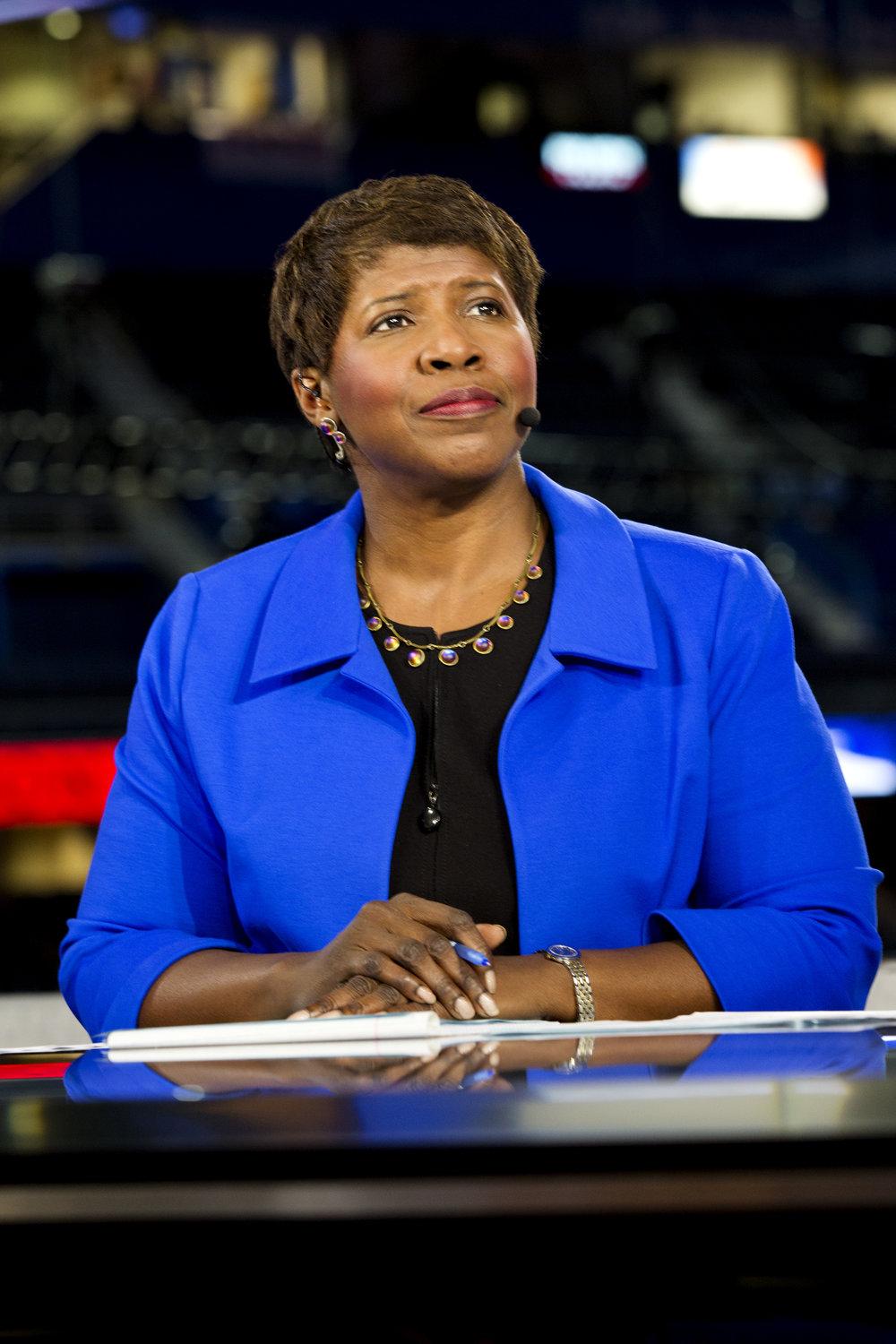In memory of Gwen Ifill: the journalist who shattered the glass ceiling
December 29, 2016
 Photo courtesy of Wikimedia Commons/PBS NewsHour Gwen Ifill hosts PBS NewsHour at the RNC in 2012.
Photo courtesy of Wikimedia Commons/PBS NewsHour Gwen Ifill hosts PBS NewsHour at the RNC in 2012.
Gwen Ifill, a distinguished journalist and co-anchor of “PBS NewsHour” and the host of “Washington Week,” died from complications of cancer at the age of 61 on November 14, 2016. The news of her passing has brought tears to many PBS viewers. She will be remembered for setting a higher standard in journalism due to her commitment to fairness and integrity in the industry.
In 1999, Ifill became the first black woman to host a national political talk show on television, PBS’ “Washington Week in Review.” She also moderated many political debates, including the vice presidential debates between Dick Cheney and John Edwards in 2004 and between Joe Biden and Sarah Palin in 2008. In August 2013, as a co-anchor and co-editor of “PBS NewsHour,” Ifill again made history when she and Judy Woodruff became the first women to anchor a network news program.
“To be honest, I don’t remember ‘news’ before her as I was raised as a ‘public television kid’ and so I have associated her with the news for my entire life it seems,” U.S. history teacher Annie Miller said. “I have also paid close attention to elections for much of my life and I really associate her with election coverage. I will miss her during future elections. I loved that she was such a strong female reporter in an industry where it was obvious that being a woman journalist, and a woman of color to boot, was not an easy thing. She was fierce, asked tough questions, was a consummate professional but also seemed kind, empathetic and relatable.”
Ifill, a daughter of immigrants from Panama and Barbados, grew up in federally-subsidized housing in several poor neighborhoods in the East Coast. Her humble upbringing gave her not only the strength to make sense of the world around her, but also the drive to succeed as an African-American female journalist in a sphere where few people looked like her.
Because of her gender and race, she received many racist and sexist comments intended to deter her from work as a journalist. She began her career as an intern for the Boston Herald-American, when one day, a co-worker left her a derogatory note saying, “N—–, go home.” Although the man did a despicable act writing that note, she did not take it personally and did not want him fired. She took the job the Herald offered her as soon as she graduated from Simmons College, a women’s college in Boston, with a goal to prove her skeptics wrong.
With a smile that exuded warmth and a head held high, she carried her passion for journalism to the country’s most renowned newspapers, including the New York Times, the Washington Post, and the Baltimore Evening Sun. Ifill won numerous awards such as the George Foster Peabody Award and the National Press Club’s Fourth Estate Award, making her one of the most accomplished journalists in American media.
Many of the staff at BHS believe that Ifill is an inspiration for teenagers, especially for young women and African-Americans.
“I think Ms. Ifill taught us that barriers are made to be broken,” counselor Tammy Esrailian said. “Whether she wanted it or not, she was more than a role model to young black girls. In those times, there weren’t any journalists that looked like her. She had a responsibility to show young girls the path. She did all of this during a time when extreme racism existed (and it still exists today). She was professional, ethical, factual, fair, diligent, compassionate and capable. She really was in a class all her own.”
“She taught us that objective, fact-finding journalism is not dead in the world, although it sometimes feels like it is,” Miller added. “Truly great reporters will shine through. She also showed me that my own young girls, who I make watch the news, will believe that they can do anything or be anyone when they see great examples. I truly believe that ‘you can be what you see.’”




![WASC looks for more than the basic California State standards. According to chairperson Mike Woo, “As new rules and new concerns come up through society, [WASC] look[s] is the school doing something about that. Like the biggest trend post-COVID is mental wellness. So is your school doing something to address the mental health of the students? Along with are they still doing the proper academics?”](https://theburlingameb.org/wp-content/uploads/2024/03/IMG_3401-1200x1200.png)
























![“For me personally, I want [others] to see the music program as a strong union because we can really bring out the life of our school,” Vega said. “We need music, you know? Otherwise, things would be really silent and dead.”](https://theburlingameb.org/wp-content/uploads/2024/03/unnamed-1200x801.jpeg)







